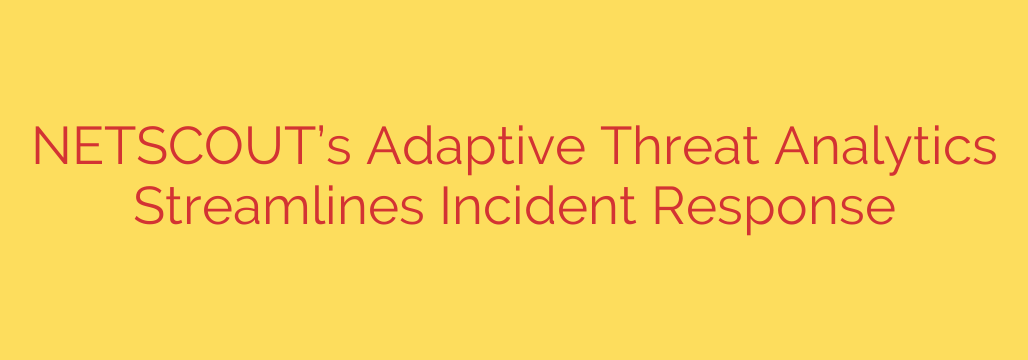
Streamline Your Incident Response with Adaptive Threat Analytics
In today’s complex threat landscape, businesses need every advantage to stay ahead of cyberattacks. Fortunately, adaptive threat analytics is revolutionizing incident response, offering a smarter, more efficient way to identify, investigate, and mitigate threats.
Traditionally, security teams have been overwhelmed by a deluge of alerts, many of which are false positives. Sifting through this noise consumes valuable time and resources, delaying critical responses. Adaptive threat analytics addresses this challenge by automatically learning normal network behavior and identifying deviations that indicate malicious activity.
Key benefits of embracing this approach include:
- Faster Threat Detection: By establishing a baseline of normal activity, systems can quickly pinpoint anomalies, dramatically reducing the time to detect breaches.
- Improved Accuracy: Adaptive learning minimizes false positives, allowing security teams to focus on genuine threats and reduce alert fatigue.
- Enhanced Context: Understanding the “who, what, when, and where” of an attack is crucial. Adaptive analytics provides enriched data and context around each incident, facilitating more informed decision-making.
- Reduced Investigation Time: With pre-correlated data and clear attack timelines, investigators can rapidly understand the scope and impact of an incident.
- Proactive Threat Hunting: By analyzing behavioral patterns, you can proactively hunt for potential threats that might otherwise go unnoticed.
So how can you leverage adaptive threat analytics to improve your security posture?
- Implement Network Visibility Solutions: Deep packet inspection and flow data analysis are essential for establishing a comprehensive understanding of your network traffic.
- Choose an Adaptive Analytics Platform: Look for a solution that automatically learns network behavior, provides contextual insights, and integrates seamlessly with your existing security tools.
- Automate Response Actions: Configure automated responses to common threats, such as isolating infected hosts or blocking malicious IP addresses.
- Continuously Monitor and Refine: Adaptive learning systems improve over time, but it’s crucial to continuously monitor performance and fine-tune configurations to maximize effectiveness.
- Train Your Security Team: Ensure your team understands how to interpret the insights provided by the analytics platform and how to effectively respond to identified threats.
Security Tip: Remember that adaptive threat analytics is most effective when combined with other security measures, such as firewalls, intrusion detection systems, and endpoint protection. A layered approach is always the best defense.
By embracing adaptive threat analytics, you can transform your incident response from a reactive exercise into a proactive and highly effective security strategy. This translates to reduced risk, minimized downtime, and a stronger overall security posture.
Source: https://www.helpnetsecurity.com/2025/07/15/netscout-adaptive-threat-analytics/








